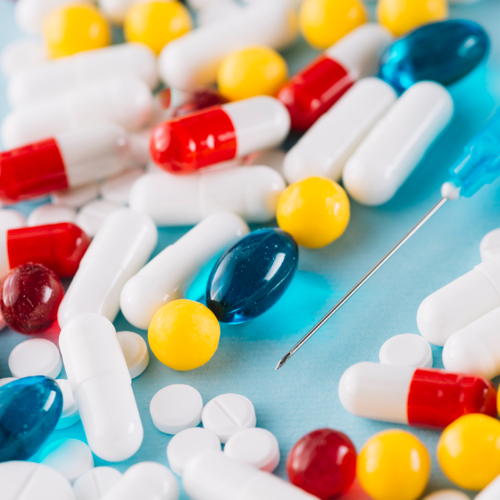COVID-19 myocarditis

Published: March 28 2024
Abstract Views: 1844
PDF: 115
HTML: 14
HTML: 14
Publisher's note
All claims expressed in this article are solely those of the authors and do not necessarily represent those of their affiliated organizations, or those of the publisher, the editors and the reviewers. Any product that may be evaluated in this article or claim that may be made by its manufacturer is not guaranteed or endorsed by the publisher.
All claims expressed in this article are solely those of the authors and do not necessarily represent those of their affiliated organizations, or those of the publisher, the editors and the reviewers. Any product that may be evaluated in this article or claim that may be made by its manufacturer is not guaranteed or endorsed by the publisher.
Similar Articles
- Eirini Flouda, Athena Stefanatou, Tinia Apergi, Intervention options: depression and cardiovascular disease during COVID-19 , Global Cardiology: Vol. 1 No. 1 (2023)
- Emanuele Monda, Giuseppe Limongelli, Unveiling the genetic aetiology of non-genetic dilated cardiomyopathy , Global Cardiology: Vol. 2 No. 4 (2024)
- Stephan von Haehling, Wolfram Doehner, Ruben Evertz, Tania Garfias-Veitl, Monika Diek, Mahir Karakas, Ralf Birkemeyer, Gerasimos Fillippatos, Piotr Ponikowski, Michael Böhm, Tim Friede, Stefan D. Anker, Iron deficiency in heart failure with preserved ejection fraction: rationale and design of the FAIR-HFpEF trial , Global Cardiology: Vol. 1 No. 1 (2023)
- Arif Albulushi, Lama S. Alfehaid, Mosaad Alhussein, Amr Youssef, Evaluating serum galectin-3 binding protein as a diagnostic and prognostic biomarker in pulmonary arterial hypertension: a comparative study , Global Cardiology: Vol. 2 No. 4 (2024)
- Babalawan Muhammad, Naser A. Ishaq, Kamilu M. Karaye, Clinical profiles and short-term outcomes of women with peripartum and dilated cardiomyopathies , Global Cardiology: Vol. 2 No. 3 (2024)
- Anders Larsson, Bertil Wegmann, Toralph Ruge, Joakim Alfredsson, Carl Johan Östgren, Tomas Lindahl, Elevated endostatin is associated with hypertension treatment, elevated high sensitivity C-reactive protein, increased waist-hip ratio, and attenuated kidney function, but not with age, in a middle-aged population , Global Cardiology: Vol. 3 No. 1 (2025)
- Ralph Stephan von Bardeleben, Muhammad Shahzeb Khan, Martin Geyer, Tim Friede, Javed Butler, Monika Diek, Jutta Heinrich, Marius Placzek, Roberto Ferrari, William T. Abraham, Ottavio Alfieri, Angelo Auricchio, Antoni Bayes-Genis, John G.F. Cleland, Gerasimos Filippatos, Finn Gustafsson, Wilhelm Haverkamp, Malte Kelm, Karl-Heinz Kuck, Ulf Landmesser, Aldo P. Maggioni, Marco Metra, Vlasis Ninios, Mark C. Petrie, Tienush Rassaf, Frank Ruschitzka, Ulrich Schäfer, P. Christian Schulze, Konstantinos Spargias, Alec Vahanian, Jose Luis Zamorano, Andreas Zeiher, Mahir Karakas, Friedrich Koehler, Mitja Lainscak, Alper Öner, Nikolaos Mezilis, Efstratios K. Theofilogiannakos, Ilias Ninios, Michael Chrissoheris, Panagiota Kourkoveli, Konstantinos Papadopoulos, Grzegorz Smolka, Wojciech Wojakowski, Krzysztof Reczuch, Fausto J. Pinto, Łukasz Wiewiórka, Zbigniew Kalarus, Marianna Adamo, Evelyn Santiago-Vacas, Tobias Friedrich Ruf, Michael Gross, Joern Tongers, Gerd Hasenfuß, Wolfgang Schillinger, Piotr Ponikowski, Stefan D. Anker, Baseline echocardiographic characteristics of patients enrolled in the randomized investigation of MitraClip device in heart failure (RESHAPE HF-2) trial: comparison with COAPT and Mitra-FR , Global Cardiology: Vol. 2 No. 2 (2024)
- Muhammad Shariq Usman, Arsalan Hamid, Shurjeel Uddin Qazi, Mikhail N. Kosiborod, Deepak L. Bhatt, Muhammad Shahzeb Khan, Muthiah Vaduganathan, Javed Butler, The effect of SGLT2 inhibitors on health status in patients with heart failure: a systematic review and meta-analysis , Global Cardiology: Vol. 2 No. 2 (2024)
- Asija Začiragić, Marija Mikić, Amela Dervišević, Orhan Lepara, Nesina Avdagić, Nermina Babić, Almir Fajkić, Amina Valjevac, Neck-to-height ratio in Bosnian university students according to the 2017 American College of Cardiology/American Heart Association guidelines on hypertension classification , Global Cardiology: Vol. 2 No. 1 (2024)
- Rafael Vidal-Pérez, Ewa A. Jankowska, The scientific targets: the myocardium, the vasculature and the body’s response to heart failure , Global Cardiology: Vol. 2 No. 1 (2024)
1-10 of 15
Next
You may also start an advanced similarity search for this article.












